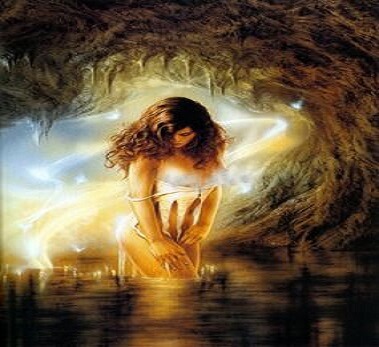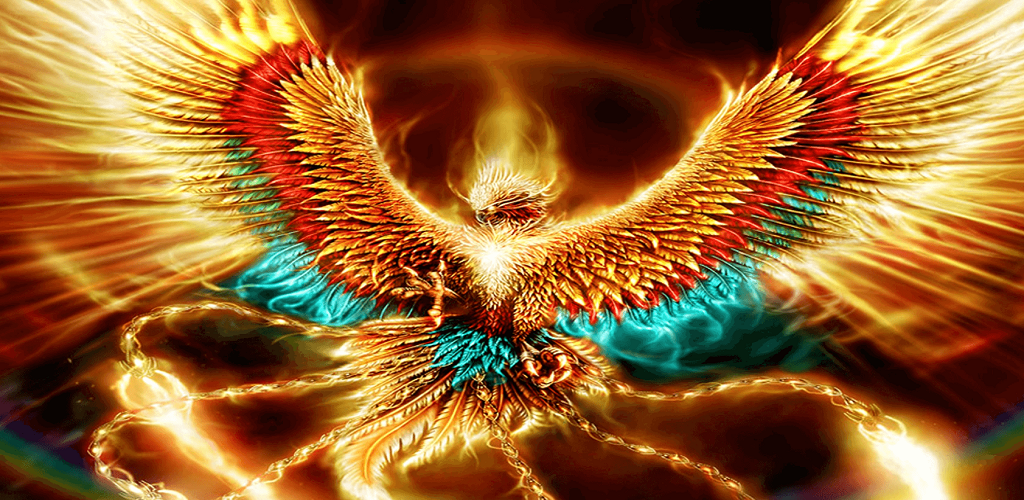
Nymphs

A nymph in Greek mythology and in Latin mythology is a minor female nature deity typically associated with a particular location or landform.
Different from other goddesses, nymphs are generally regarded as divine spirits who animate nature, and are usually depicted as beautiful, young nubile maidens who love to dance and sing; their amorous freedom sets them apart from the restricted and chaste wives and daughters of the Greek polis.
They are beloved by many and dwell in mountainous regions and forests by lakes and streams. Although they would never die of old age nor illness, and could give birth to fully immortal children if mated to a god, they themselves were not necessarily immortal, and could be beholden to death in various forms. Charybdis and Scylla were once nymphs.
Other nymphs, always in the shape of young maidens, were part of the retinue of a god, such as Dionysus, Hermes, or Pan, or a goddess, generally the huntress Artemis. Nymphs were the frequent target of satyrs.
Nymphs by Association - the well-known (and more obscure) groups of Nymphs:
Amnisiades
Nymphs of the river Amnisus in Crete and devotees of the goddess Artemis. They cared for the goddess's sacred deer.
Anigrides
Nymphs of the Angridus River in Elis and they were healer nymphs of some sort. They had this grotto at the river and people with skin diseases came and bathed there and gave the nymphs gifts in the hopes that they'd get better.
Dodonides
The Dodonides, or Dododaean Nymphs, were the nymphs who brought up Zeus (or possibly a whole bunch of others). Zeus at Dodona was the site of the most ancient oracle in Greece.
Dryades
The Dryades were the Nymphs of the Forest, or wood nymphs. Dryades were immortal, unlike other types, like the Hamadryades, who lived in oak trees and would die when the tree they lived in died. They were the hunting companions of Artemis.
Epimeliades
Epimeliades were the Protectors of Sheep. So you could call them Sheep Nymphs.
Haliai
Quite simply, sea nymphs. They show up under this name in a random play by Sophocles and in Callimachus' Hymn to Artemis, but doesn't seem to be as commonly used as the more general "nymph" or the more specific "Nereid" or "Oceanid". Haliai comes from the word for "sea" and also means "salt".
Hamadryades
A Hamadryad was a nymph of an oak tree. She was very connected to the tree in which she lived, and very powerful if angered. If her tree was hurt, then the hamadryad was hurt. If her tree was cut down, then the hamadryad also died. It was a hamadryad who began the whole story of the Golden Fleece by punishing the son of a man who'd thrown a knife into her tree.
The Heliades
The Heliades (also called the Heliadai) were the daughters (and sons) of Helios, the Sun, by both Clymene and Rhodos (each had their own set of kids, that is). The most famous of the Heliades were the sisters of Phaeton (son of Clymene). Well, when Phaethon died on that fateful chariot ride (he was too weak to control the divine horses and almost set the entire earth on fire and got zapped by Zeus with the typical lightening bolt from the blue), his sisters Aegle, Aetheria, Dioxippe, and Merope (also daughters of Clymene) wept uncontrollably for four months.
The Hespirides
The Hespirides were the nymphs who guarded the Tree of the Golden Apples. Their father was Hesperos, or the God of the Evening Star. Their names were:
Aegle
Eritheia
Hesperia
Hyades
These nymphs of debated parentage were the sisters of Hyas, who got killed by a boar. They mourned for him so much that the Gods hung them as stars in the Sky. The root of their name (and Hyas' name) is "rain" and when their constellation rose with the sun it meant stormy rainy weather. So, different authors gave them different names but the compiled list reported by Robert Graves is: Ambrosia, Eudora, Aesyle, Eidothea, Althea, Adraste, Philia, Coronis, Cleis, Phaesyle, Cleia, Phaeo, Pedile, Polyxo, Phyto, Thyene, Bacche, Macris, Nysa, Erato, Brome, and Dione.
Lamusidean Nymphs
Lamusidean Nymphs were the daughters of Lamus. They were the nurses of Dionysus, but because of Hera's deep jealousy they were driven mad. They would have chopped the baby Dionysus up, and not Hermes appeared on the scene just in time to save the baby God.
Maliades
These dryades lived in fruit trees - were fruit trees ...
Meliades
These dryades were the Nymphs of Ash Trees. They were the daughters of Gaia and of Uranus' blood.
Naiades Hylas and the Nymphs
The Naiades were the nymphs of freshwater streams rivers and lakes, but were not limited to these water courses. Many Naiades could be found prancing around with Artemis, who chose 20 Naiades from Amnisus for companions. They were the daughters of rivergods. They had extremely long lifetimes, but they were not considered immortal, and were believed to have sat in on the Gods discussions on Olympus. There were 5 types of Naiades:
Pegaiai, the Nymphs of Springs
Krinaia, the Nymphs of Fountains
Potameides, the Nymphs of Rivers and Streams
Limnades or Limnatides, the Nymphs of Lakes
Eleionomai, the Nymphs of Marshes
Hylas and the Nymphs
That particular story is important to the Greeks as Hylas, the beautiful beloved (yes, in the sexual way) of Heracles, was sent to go get water on the island of Mysia, and the naiads there, totally taken in by his beauty, carried him off. Every year, the priests marched to a neighboring mountain and called Hylas's name three times. Someone will have to tell me if they still do this.
Napaea
The Napaea were the Nymphs of the Valley. In Greek nape means dell.
Nereides
The Nereides were the 50 daughters of Nereus (the Sea) and Doris. The were the Nymphs of the Sea. One of them was Amphitrite. The stories say that it was when they went and performed a dance on the island of Naxos that Poseidon decided to claim Amphitrite as his bride.
Nyseides
Alternatively the Nysiades, were nymphs that lived on Mount Nysa and raised the young Dionysus after he was stashed their by Zeus after his thigh-birth. Where exactly Mount Nysa is seems unclear, but at least we have the names of the nymphs: Cisseis, Nysa, Erato, Eripha, Brome, and Polyhymno.
Oceanides
There were 3000 Oceanides, and they were all the Nymphs of the Ocean. Their mother was the Titaness Tethys and their father the Titan Oceanus.
Oreades
Oreades were the Nymphs of the Mountains. A particularly famous one is Echo.
The Pleiades
There were seven Pleiades, and you can find them when you look in the sky (they are stars). Their names were:
Maia, "Mother" "Nurse"
Alcyone, "Queen who wards off evil [storms]"
Electra, "Amber" "Shining" "Bright"
Celaino, "Swarthy"
Taygeta, "Long-necked"
Sterope or Asterope, "Lightening" "Twinkling" "Sun-face"
Merope "Eloquent" "Mortal" "Bee-eater"
They were the daughters of Pleione (an Oceanid) and Atlas. Pleione means "sailing queen" and so her daughters would be the "sailing ones", but the root could also be peleiades which means a flock of doves and fits perfectly. They waited on Artemis with their half-sisters the Hyades and with them were called the Atalantides, Dodonides, and Nysiades.
They were pursued by Orion for seven years, and got away only when Zeus granted their prayers and changed them into doves.
Thriai
They were Bee-Nymphs who used honey to make prophesies. The three of them raised Apollo, the god of the Oracle of Delphi. Their name is shared with the little stones that are thrown to tell the future.
Sources
Our Mobile Application
Check out Our Mobile Application "Ancient Greece Reloaded"


